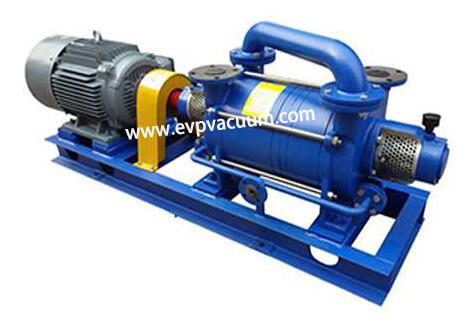Vacuum pump for vacuum impregnation
In the textile industry, the operation method is basically the same as the traditional wet impregnation, but the porous material needs to be vacuumized first, and then the impregnation liquid is added. Vacuuming can remove the adsorbed gas and water in the porous material, which is beneficial for the metal ions to be impregnated into the porous material. Especially for the microporous molecular sieve, the metal ions of the final material obtained by vacuum impregnation are more evenly distributed and easy to enter the porous material than the traditional wet impregnation.
In the laboratory of the school, the purpose of vacuum impregnation technology is to improve the utilization of bone samples with poor bone quality, prolong the service life of bone samples, and avoid the disadvantages of traditional water paint. Methods the dried bone samples were soaked in hz-806a / hz-806b two-component epoxy gutta percha working solution in vacuum, soaked in glycerin ethanol protective solution for initial curing, and then air dried to complete curing to get the finished product. At last, the improvement of bone density and cancellous was evaluated from the aspects of appearance, anatomical characteristics and physical properties. Results after treatment, a smooth and thin paint film was formed on the surface of the bone specimen, and the spaces in the cancellous bone were filled with epoxy gutta percha after curing. The hardness, toughness, safety and color of the bone specimen were greatly improved compared with those before treatment, with an average weight gain rate of 80.3%. Conclusion vacuum impregnation is a new technique for the protection of bone specimen, especially for the protection of bone specimen with poor bone quality.
In ceramic industry, 10wt% NiO was introduced into the porous (1-2 μ m) ceramic support by impregnation. We want to use the method of dipping nitrate solution. The efficiency of wet impregnation is very low. It has to be repeated many times to reach the impregnation capacity. So I originally wanted to use vacuum impregnation, but there was no professional vacuum impregnation equipment in the laboratory, but there was a vacuum pump. I didn’t know whether there was any effect of vacuum impregnation when I put the impregnation liquid and the carrier into the beaker together, and then put the beaker into the vacuum pump to vacuumize again?
Vacuum impregnation in food industry refers to the process that food is directly placed in the container’s impregnation solution, under vacuum and normal temperature, through long-term impregnation, the impregnation solution slowly penetrates into the food interior to finish the process of taste, which is often used in the processing of fungus food. Compared with normal temperature impregnation, it has a shorter use time and a better taste effect.

Most of the vacuum impregnation equipment in the prior art include impregnation tank, air extraction device, feeding device and discharging device. After the materials are placed in the impregnation cage, they are placed in the impregnation tank as a whole. After that, the vacuum is drawn and the impregnation material is discharged to complete the impregnation process. After the impregnation is completed, the impregnation material is extracted and the impregnation cage is proposed.
In the long-term work process, staff found that the existing technology has the problem of uneven taste of materials. For food, where the raw materials are stacked, there are often dead spots that are difficult to encounter by the impregnating materials. In these dead spots, the finished product will not taste.
In order to solve the problem that the finished product in the prior art can not taste evenly and has poor quality control. According to the utility model, a vacuum impregnation device is proposed,
The technical scheme of the utility model is realized as follows: a vacuum impregnation device includes a sealing cover sealed with the impregnation tank, a vacuum pumping device is arranged on the impregnation tank, a liquid inlet pipe connected with the interior of the impregnation tank is arranged on the side of the impregnation tank, an impregnation cage is arranged in the impregnation tank, a mixing device is arranged on the sealing cover, and the mixing device includes a mixing paddle connected with the mixing motor The agitator is located inside the impregnating tank and above the impregnating cage, the top of the agitator is connected with the output shaft of the agitator motor, the main shaft of the agitator is provided with a through hole, the main shaft of the agitator is provided with a hollow sleeve, the sleeve and the main shaft of the agitator are provided with a liquid containing cavity, and the main shaft of the agitator is provided with a through hole The liquid containing cavity is connected with a return line, the inlet of the return line is connected with the bottom of the immersion tank, and the return line is provided with a liquid pump.
(The article comes from the Internet. If reprinting is not allowed, please contact our company to delete it.)
